In today’s world, partnerships between sponsors and sponsored parties are crucial for the success of events, organizations, and individuals. These partnerships not only provide funding or resources but also help to build strong relationships and networks. To ensure that both parties are on the same page and have a clear understanding of their responsibilities, it is essential to have a formal agreement in place.
A sponsorship agreement serves as a legal document that outlines the terms and conditions of the partnership, protecting the interests of both parties involved.
What is a Sponsorship Agreement?
A sponsorship agreement is a written contract that formalizes a partnership between a sponsor and a sponsored party. It is a document that outlines the terms and conditions of the partnership, including the obligations and benefits of each party.
This agreement serves as a reference point for both parties and helps to avoid any misunderstandings or disputes that may arise during the course of the partnership.

Why is a Sponsorship Agreement Important?
A sponsorship agreement is important for several reasons:
- Clarity: By clearly outlining the terms and conditions of the partnership, a sponsorship agreement ensures that both parties have a clear understanding of their roles, responsibilities, and obligations.
- Protection: A sponsorship agreement protects the interests of both parties by clearly stating their rights and obligations. It provides a legal framework for resolving any disputes that may arise during the partnership.
- Professionalism: A formal agreement gives the partnership a professional image, showing that both parties take their roles and responsibilities seriously. It enhances the credibility and reputation of the sponsored party.
- Accountability: A sponsorship agreement holds both parties accountable for their commitments. It ensures that the sponsor fulfills its obligations, such as providing funding or resources, and that the sponsored party meets its deliverables, such as promoting the sponsor’s brand or products.
How to Create a Sponsorship Agreement
Creating a sponsorship agreement involves several steps:
1. Identify the Parties Involved
Start by clearly identifying the sponsor and the sponsored party. Include their legal names, addresses, contact information, and any other relevant details.
2. Define the Scope of the Partnership
Specify the purpose and objectives of the partnership. Clearly outline what the sponsor will provide (funding, resources, etc.) and what the sponsored party will offer in return (brand exposure, promotional activities, etc.).
3. Outline the Terms and Conditions
List the terms and conditions of the partnership, including the duration of the agreement, the financial obligations of the sponsor, the deliverables of the sponsored party, and any other specific requirements or restrictions.
4. Include Legal Clauses
Consider including clauses regarding liability, termination, intellectual property rights, confidentiality, and dispute resolution. Seek legal advice to ensure that these clauses are valid and enforceable.
5. Review and Sign the Agreement
Once the agreement is drafted, review it carefully to ensure that all the terms and conditions are accurately reflected. Seek input from both parties and make any necessary revisions. Once both parties are satisfied with the agreement, sign it to make it legally binding.
Examples of Sponsorship Agreements
Here are a few examples of common sponsorship agreements:
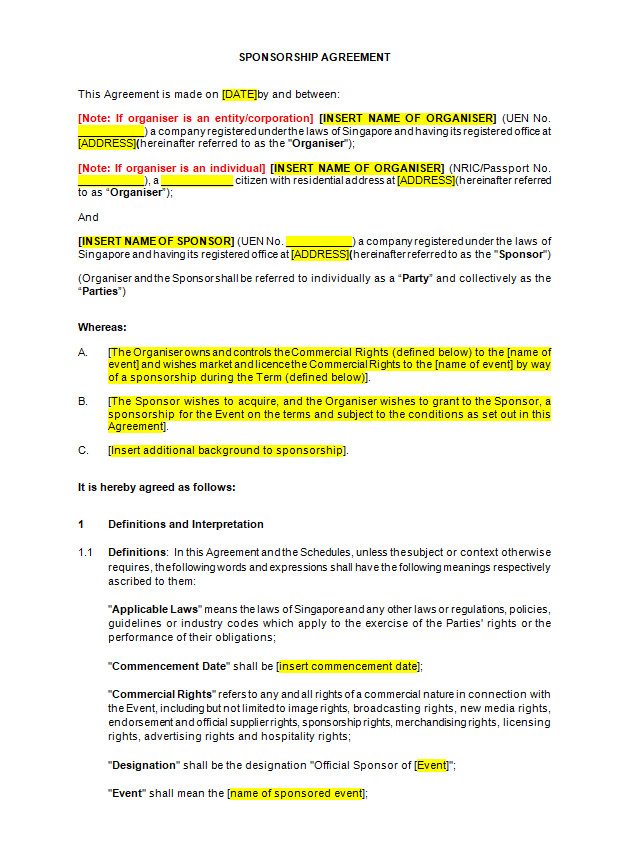
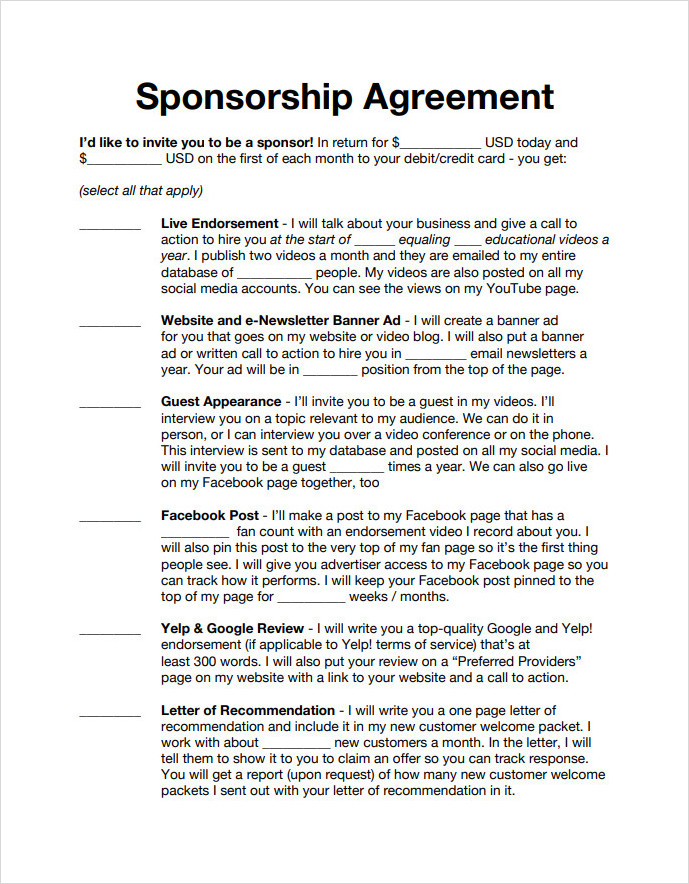
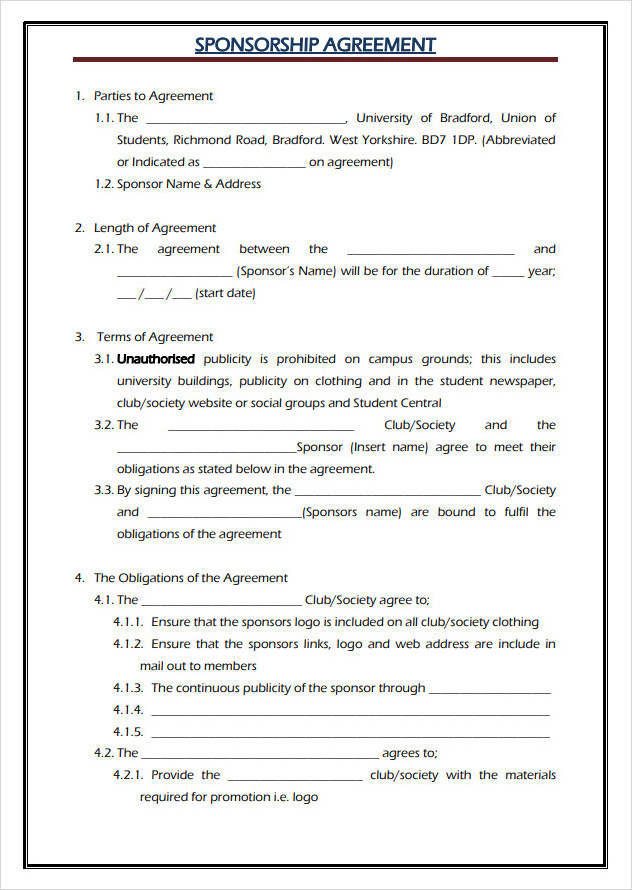
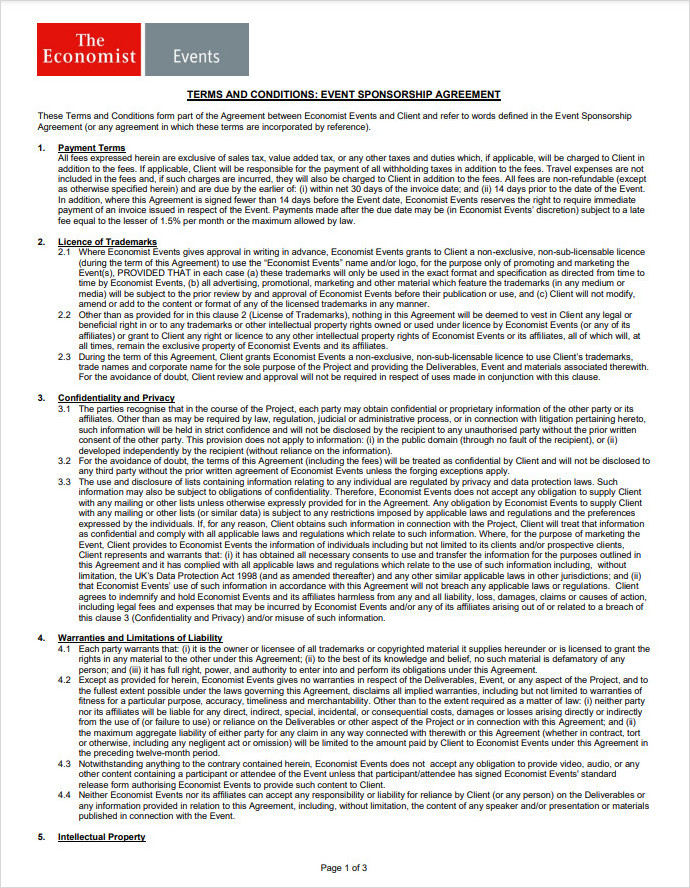
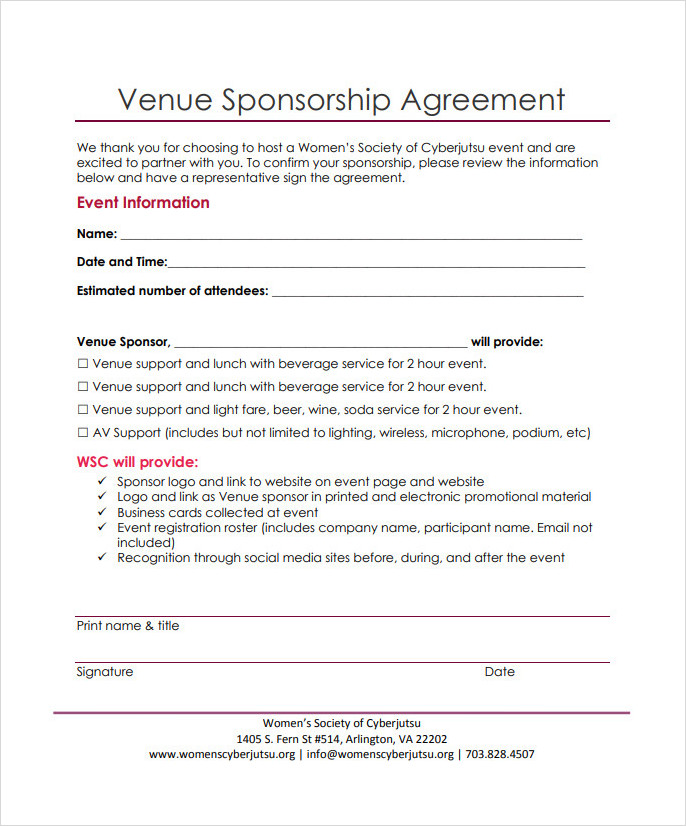
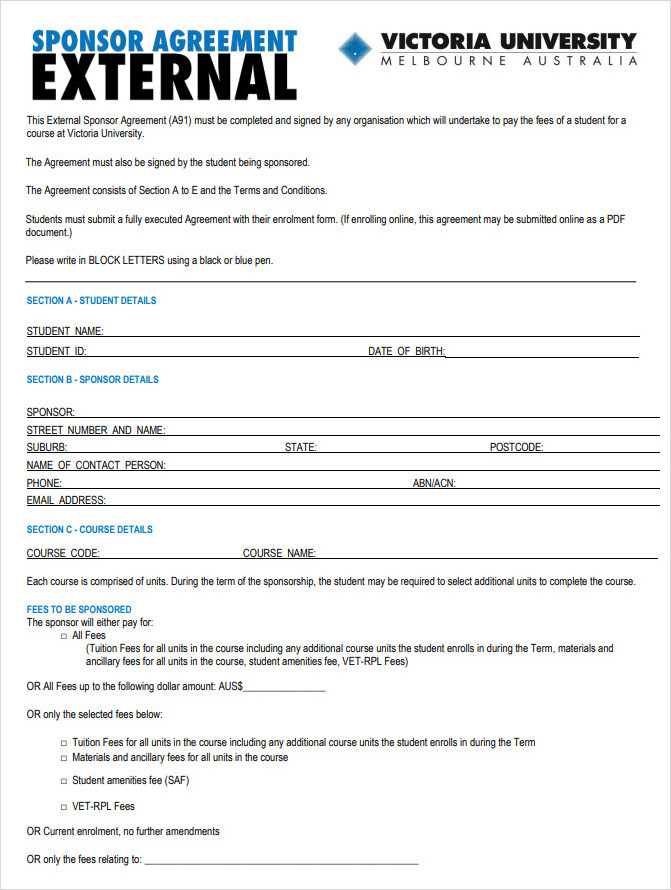
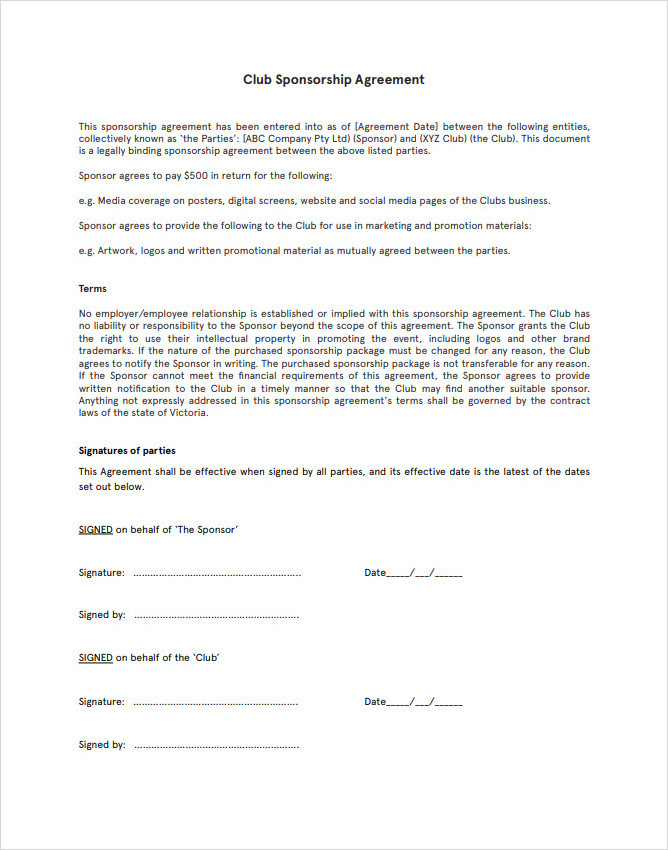
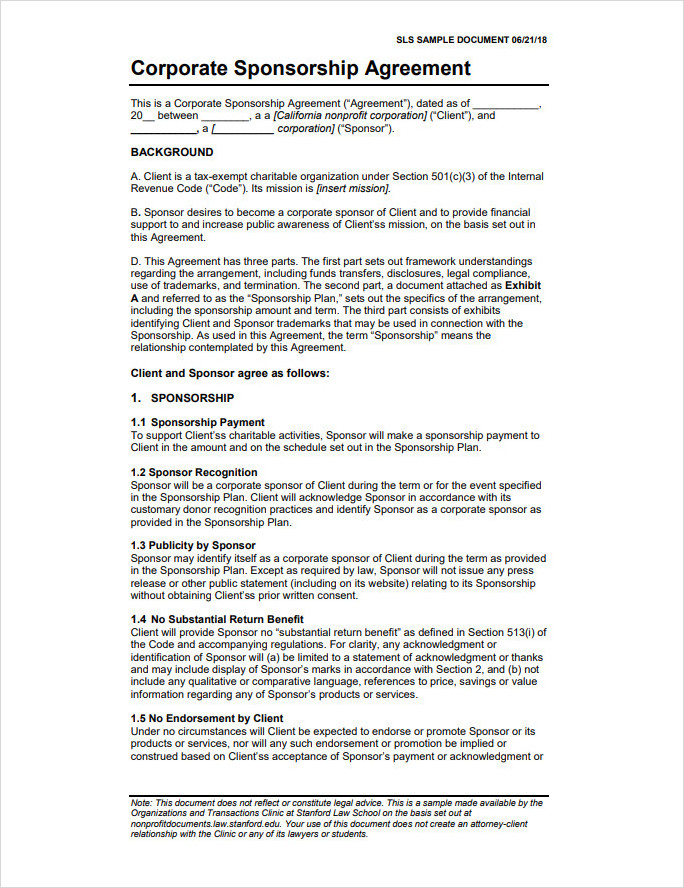
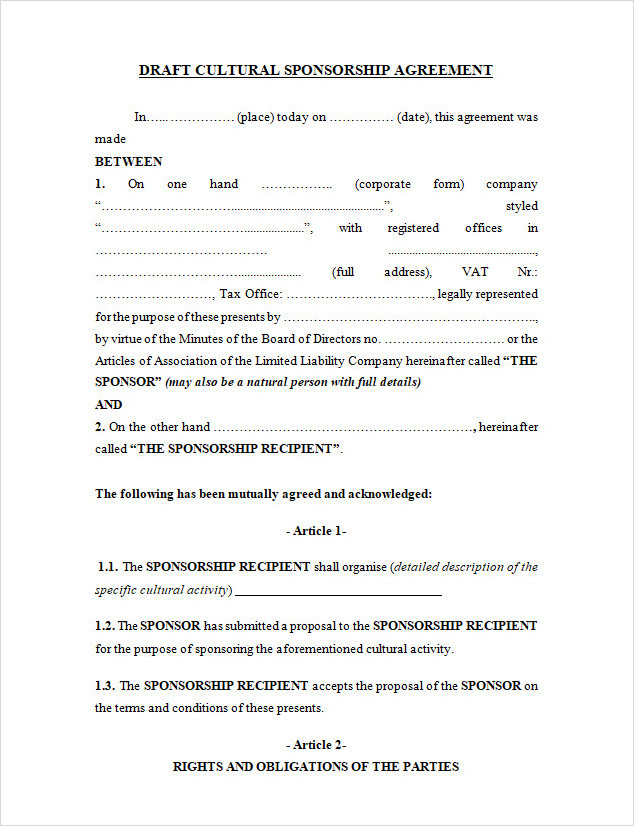
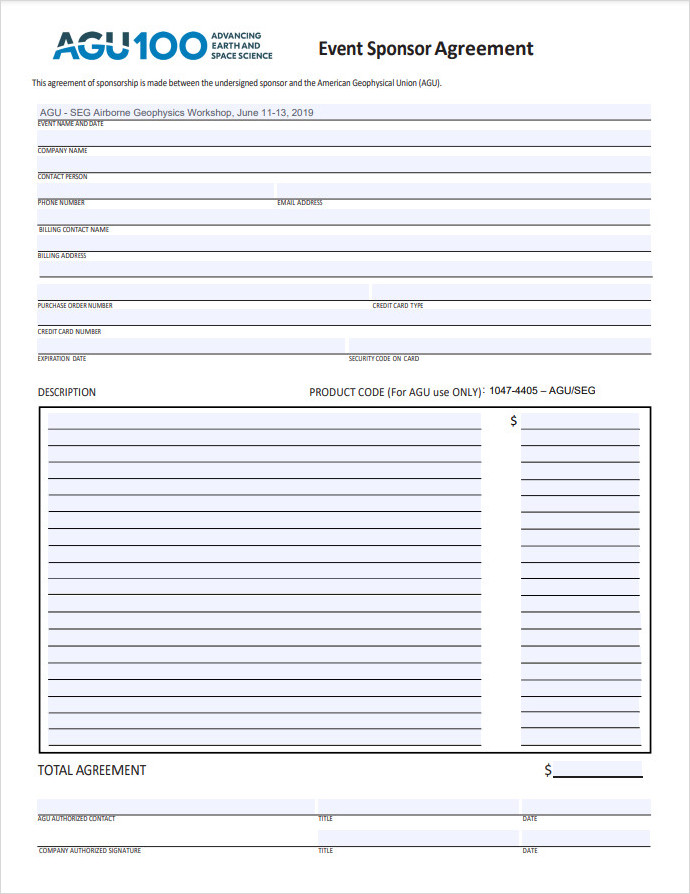
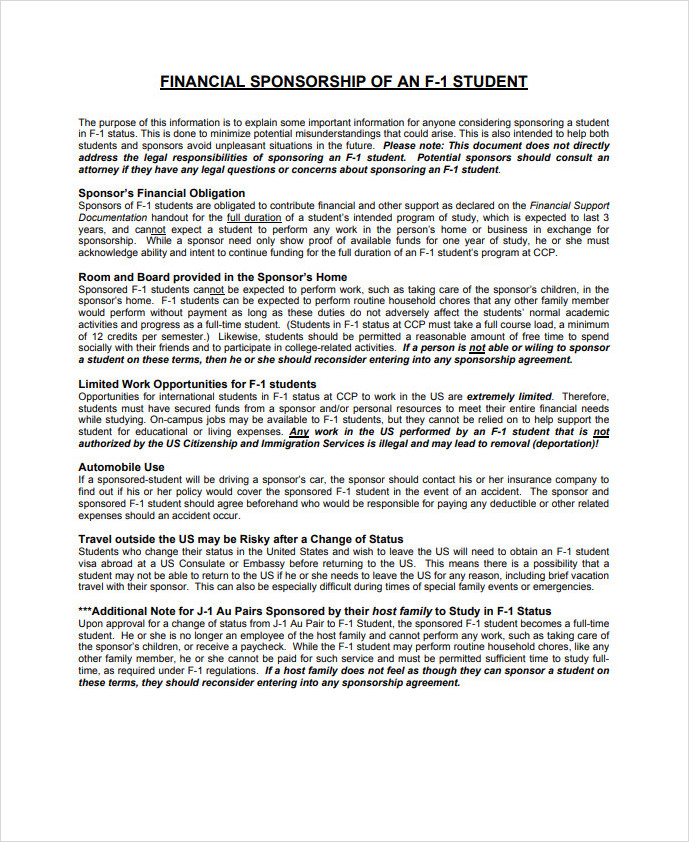
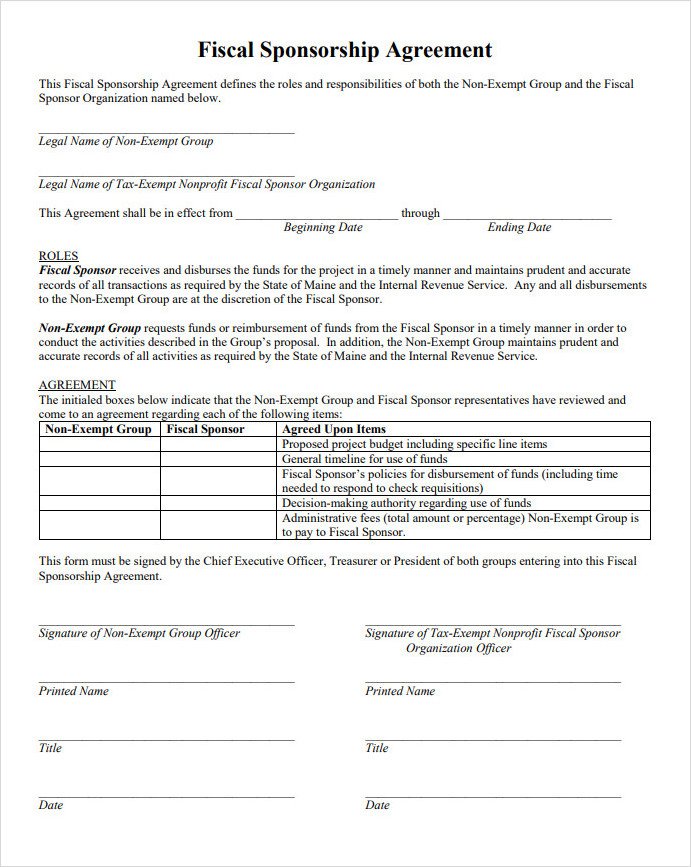
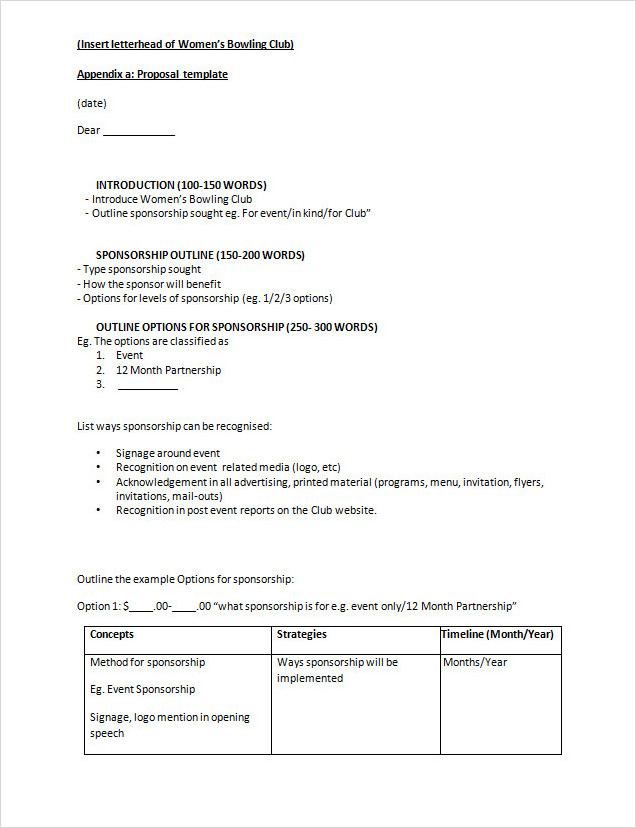
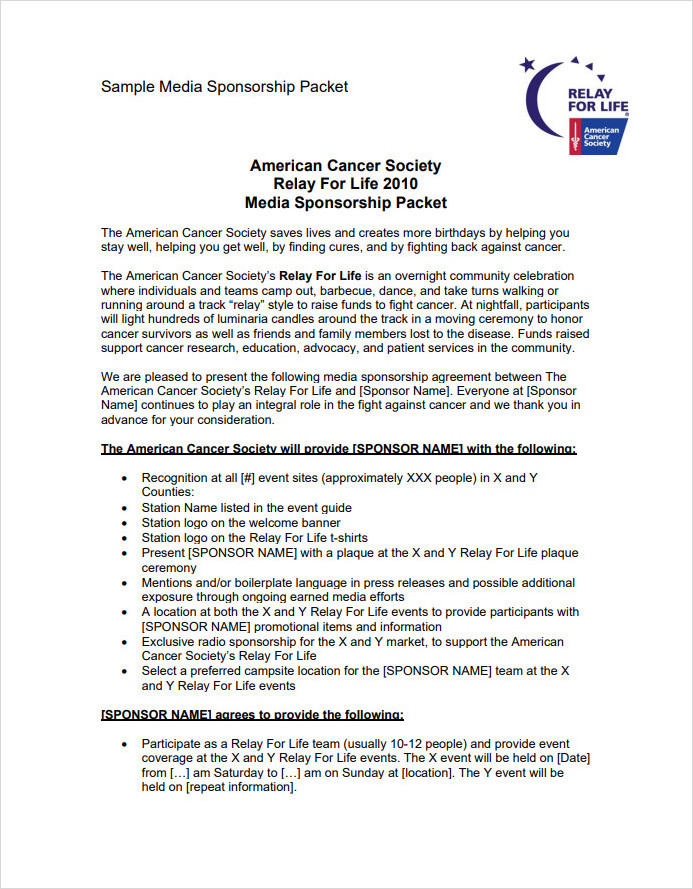
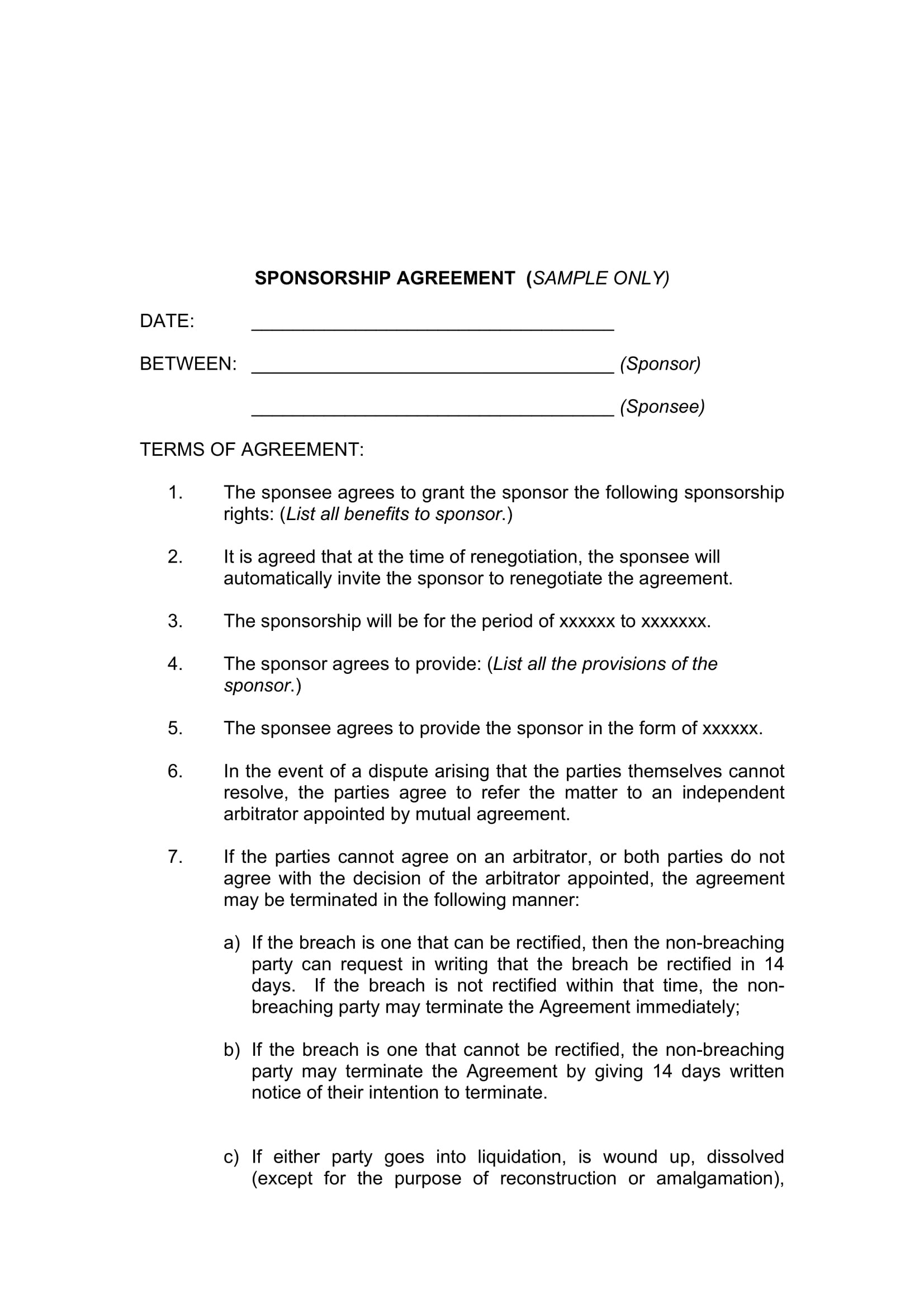
Tips for Successful Sponsorship Agreements
Here are some tips to ensure the success of your sponsorship agreement:
- Clear Communication: Maintain open and transparent communication with your sponsor throughout the partnership. Regularly provide updates on the progress and impact of the sponsorship.
- Deliver on Your Promises: Fulfill your obligations as outlined in the agreement. This includes meeting deadlines, promoting the sponsor’s brand or products, and providing reports or evaluations as required.
- Build a Relationship: Treat your sponsor as a partner rather than just a source of funding or resources. Cultivate a relationship by involving them in key decisions and activities and showing gratitude for their support.
- Evaluate and Improve: Regularly evaluate the success of the partnership and identify areas for improvement. Use this feedback to make adjustments to future sponsorship agreements.
Conclusion
A sponsorship agreement is a vital tool for formalizing partnerships between sponsors and sponsored parties. It provides clarity, protection, and professionalism, ensuring that both parties understand their roles and responsibilities.
By following the steps outlined in this guide and considering the tips for success, you can create a strong and successful sponsorship agreement that benefits all parties involved.
Sponsorship Agreement Template – Download
- Free Printable Exercise Planning Template - November 24, 2025
- Free Executive Summary Template (Word) - November 20, 2025
- Free Executive Resume Template (Word) - November 20, 2025